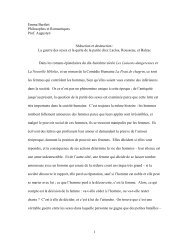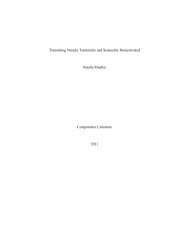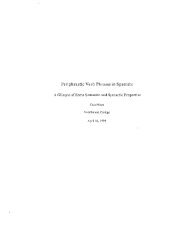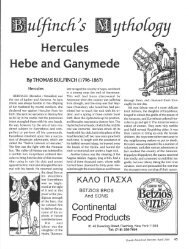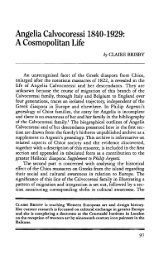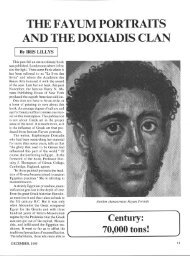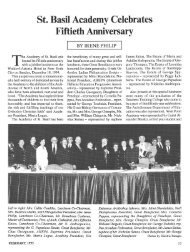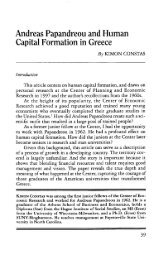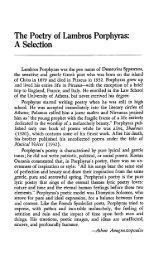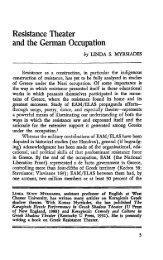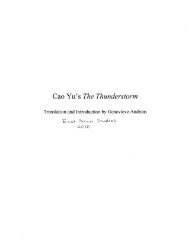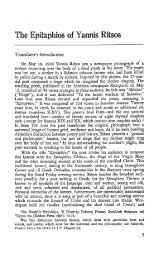Mythistorema - Triceratops Home
Mythistorema - Triceratops Home
Mythistorema - Triceratops Home
You also want an ePaper? Increase the reach of your titles
YUMPU automatically turns print PDFs into web optimized ePapers that Google loves.
68 JOURNAL OF THE HELLENIC DIASPORA<br />
20<br />
The epigraph of this poem, "Andromeda," did not appear in the<br />
early editions of <strong>Mythistorema</strong>. Seferis added this key-word in response<br />
to a question by his French translator, Robert Levesque, and it appeared<br />
first in the French translation and in the English of Rex Warner, and<br />
only recently in the last Greek edition of Seferis' poems. The poem would<br />
be much more difficult to explicate without the epigraph, because Seferis<br />
blends in it two myths, those of Prometheus and of Andromeda." What<br />
the two myths have in common is the chaining of their protagonists to<br />
a rock. As in the case of modern Orestes, here again an act of hubris is<br />
implied by the identification of the protagonist with Prometheus, as well<br />
as Andromeda (who did not commit hubris herself but paid for her<br />
mother's arrogance).<br />
The blending of the two myths is evident in the very first lines: "In<br />
my breast the wound opens again" is a reference to Prometheus, whose<br />
liver, as is well known, was eaten by a vulture every time it regenerated,<br />
as he was chained to a rock. The next line, "When the stars are setting<br />
and become conjoined with my body," is an allusion to Andromeda, who<br />
became a constellation. Like the two mythical characters, the protagonist<br />
feels chained to a rock. The stones in the line that follows are not the<br />
same as the rock to which the protagonist is bound, but they are also<br />
part of his tragic predicament.<br />
These stones which are sinking into the years, how far will<br />
they drag me with them?<br />
In "Mycenae," the poet expresses this same motif of the fateful stones<br />
which cause him to sink. 80<br />
"According to Greek mythology, Andromeda was the daughter of the king and<br />
queen of Ethiopia, Cepheus and Cassiopeia. Poseidon, in order to punish Cassiopeia,<br />
who bragged that she was prettier than the Nereids, sent a sea monster to destroy<br />
their land. The oracle of Ammon instructed Cepheus to give his daughter as a<br />
scapegoat to the monster in order to save his land. Andromeda was chained to a<br />
rock by the shore as prey for the monster. Perseus, however, returning from the<br />
slaying of the Gorgon Medusa, killed the monster, freed Andromeda and married<br />
her. This enraged Phineus, the brother of Cepheus, who wanted to marry Andromeda<br />
himself. In the ensuing fight, Perseus showed the head of the slain monster<br />
Medusa to Phineus, turning the latter to stone. Later, Athena turned all the characters<br />
of the story into constellations.<br />
"Needs must he sink who carries the great stones;<br />
These stones I have carried as long as I was able,<br />
These stones I have loved as long as I was able,<br />
These stones my fate.<br />
Wounded by my own soil<br />
Tortured by my own garment<br />
Condemned by my own gods,<br />
These stones.



